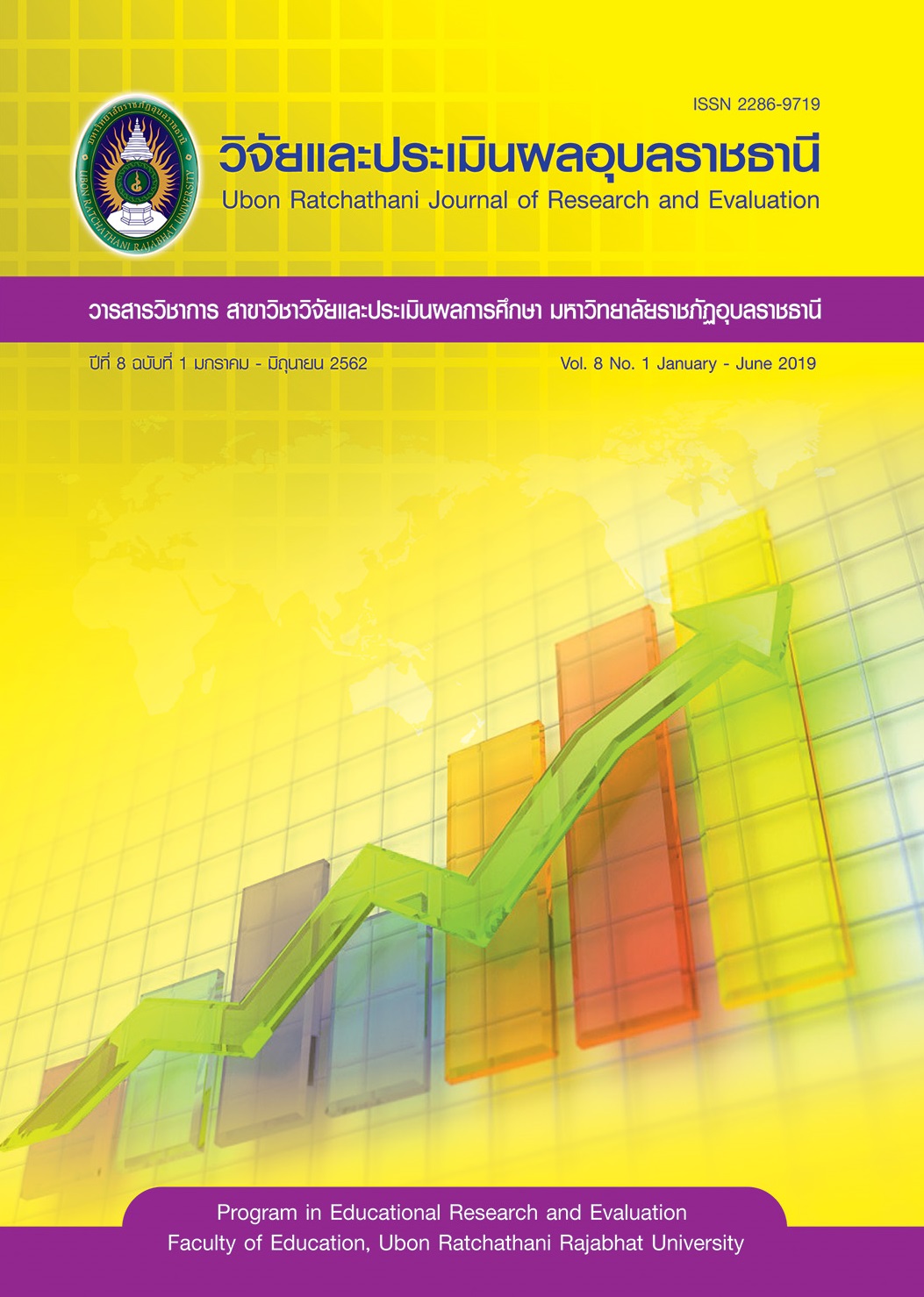The Administrative Factors Affecting the Creative Leadership of Teachers under NongKhai Primary Educational Service Area Office 1
Keywords:
Administrative Factors, Creative LeadershipAbstract
The purposes of this research were 1) to study the level of administrative factors and the level of creative leadership of teachers 2) to study the relationship between administrative factors and creative leadership of teachers and 3) to create predictive factors for administrative factors Affecting the creative leadership of teachers in schools under the Nong Khai Primary Educational Service Area 1. 316 teachers were using stratified random sampling. The research instrument was the 5-level-rating scale. Ask about management factors which has the power of discrimination between 0.34 - 0.88, confidence value of 0.98, equal to and inquiring about the creative leadership of the teacher which has the power of discrimination between 0.41 - 0.92, confidence value of 0.98. Statistics used for data analysis were frequency, percentage, mean, standard deviation, correlation coefficient and stepwise multiple regression analysis.
The research findings were as follows :
- Administrative factors in schools in the overall were at a high level which motivation factor was at a very high level and creative leadership of teachers in the overall at a very high level which creative thinking was at a very high level.
- Administrative factors and creative leadership of teachers at a low level significantly Statistical at the level of .01
- The predicting equations of creative leadership of teachers were :
Predictive equation in raw score:
= 2.40 + .50 (X3) + .17 (X6) + .18 (X5) - .14 (X2) + .15 (X4)
Predictive equation in the standard score:
=.65(ZX3)+ .45(ZX6)+ .39(ZX5)- .25(ZX2)+ .21(ZX4)
References
Chareonwongsak, K. (2010). Creative thinking (8th ed.). Bangkok: Success Media. [in Thai]
Howard, L.T. (2005). Competency-based educational. Englewood Cliffs, NJ: Prentice–Hall.
Hoy, W.K., & Miskel, C.G. (2001). Educational administration: Theory, research and practice
(6th ed.). Boston: McGraw – Hill.
Jantamat, C. (2017). The administrative factors affecting operation to standard practice of school administrators under the Office of Loei Primary Educational Service Area (Master’s Thesis, department of Educational Administration). Udon Thani Rajabhat University, Udon Thani. [in Thai]
Kanjanawasee, T., & Kanjanawasee, S. (2016). Research methodology. Bangkok: Chulalongkorn University. [in Thai]
Nakwichet, K. (2009). Creative leadership for education. SamutPrakarn: Teerasarn Publisher Press, [in Thai]
Nipawan, W. (2009). Management according to the moral guidelines and sufficiency economy guidelines. Bangkok: Prophase. [in Thai]
Oldham, G.R., & Cummings, A. (1996). Employee creativity: Personal and contextual factors at work. Academy of Management Journal, 39(3), 607-634.
Patipan, K. (2012). A structural equation model of creative leadership for vocational college administrators. (Doctoral’s Dissertation, department of Educational Administration).
Khon Kaen University, Khon Kaen. [in Thai]
Puccio, G. (2007). Creative leadership: Skills that drive change. Thousand Oaks, CA: Sage.
Raelin, W.H. (2003). The role of human resource management and the human resource professional in the new economy. Pretoria, South Africa: University of Pretoria.
Ritbamrung, S. (2013). Creative leadership of school administrators affecting effectiveness of school under Secondary Educational Service Area Office 30 (Master’s Thesis, department of Educational Administration). Khon Kaen University, Khon Kaen. [in Thai]
Singthong, K. (2018). The development of creative leadership program for teachers in schools under Secondary Educational Service Area Office 20 (Master’s Thesis, department of Educational Administration). Mahasarakham University, Mahasarakham. [in Thai]
Sisk, W.R. (2001). The compensation handbook: A state-of the-art guide to compensation strategy and design. Belmont, CA: Donnelley & Sons, 2001.
Sternberg, R.J. (2006). A propulsion model of creative leadership. The Leadership Quarterly, 14(2006), 455-473.
Stoll, L., & Temperley, J. (2009). Creative leadership teams. Journal of Management in Education. 23(1), 12-18.
Thangdee, A. (2017). The administrative factors affecting the management of strategic performance-based budgeting in schools under the Secondary Educational Service Area Office 20 (Master’s Thesis, department of Educational Administration). Udon Thani Rajabhat University, Udon Thani. [in Thai]
Tuttle, K.R. (2000). Aesthetics and criticism (2nd ed.). Connecticut: Greenwood Press.
Williams, R.L. (1994). Essentials of total quality management. New York: Amacom.
Woodman, R.W., & Schoenfeldt, J.E. (1989). Toward a theory of organizational creativity. Academy of Management Review, 18(2), 293-321.
Downloads
Published
How to Cite
Issue
Section
License
1. บทความที่ตีพิมพ์ในวารสารนี้ได้มีการตรวจสอบการลอกเลียนงานวรรณกรรมแล้ว ไม่เกินร้อยละ 25
2. บทความที่ตีพิมพ์ในวารสารนี้เป็นข้อคิดเห็น ข้อค้นพบของผู้เขียนบทความ โดยผู้เขียนบทความต้องเป็นผู้รับผิดชอบต่อผลทางกฎหมายใด ๆ ที่อาจเกิดขึ้นจากบทความนั้น ๆ
3. บทความ ข้อมูล เนื้อหา รูปภาพ ฯลฯ ที่ได้รับการตีพิมพ์ในวารสารวิจัยและประเมินผลอุบลราชธานี ถือเป็นลิขสิทธิ์ของวารสารวิจัยและประเมินผลอุบลราชธานี หากบุคคลหรือหน่วยงานใดต้องการนำทั้งหมดไปเผยแพร่ต่อหรือเพื่อกระทำการใดๆ จะต้องได้รับอนุญาตเป็นลายลักษณ์อักษรจากวารสารวิจัยและประเมินผลอุบลราชธานีก่อนเท่านั้น และจะต้องมีการอ้างอิงวารสารวิจัยและประเมินผลอุบลราชธานี ฉบับนั้น ๆ ด้วย






